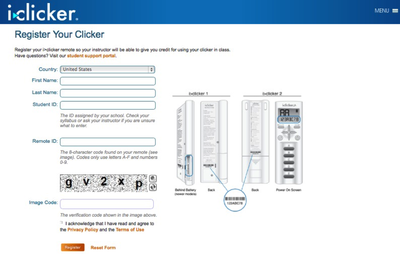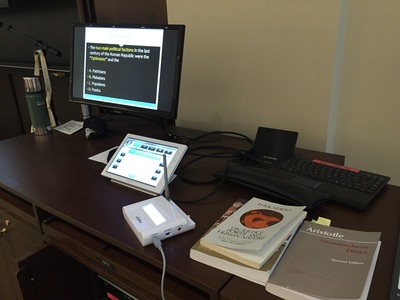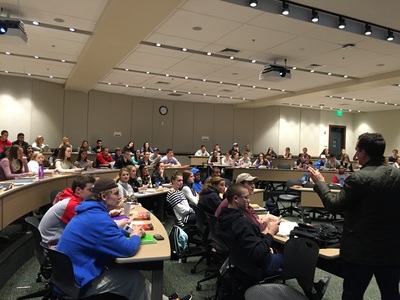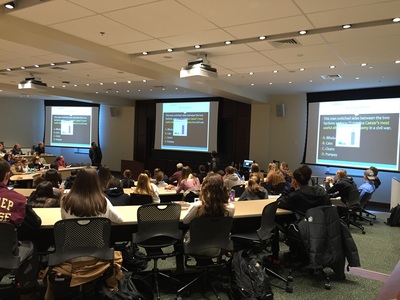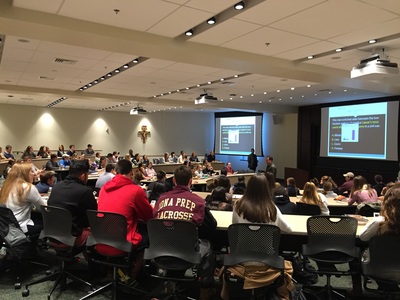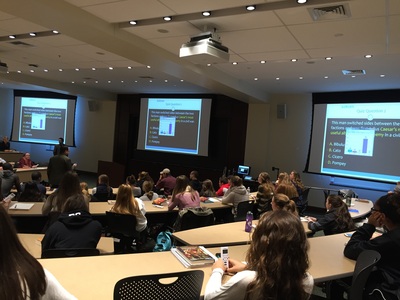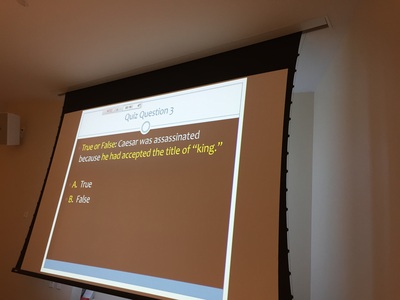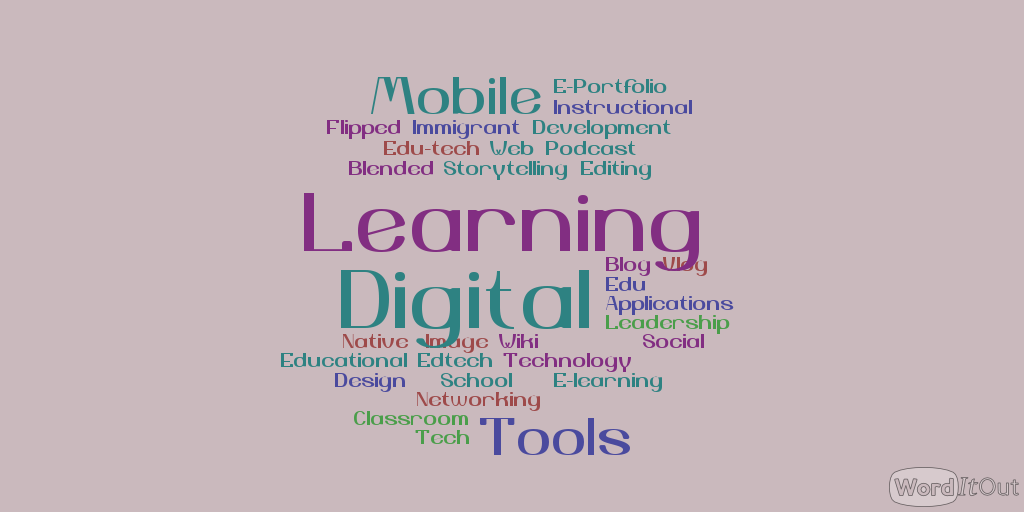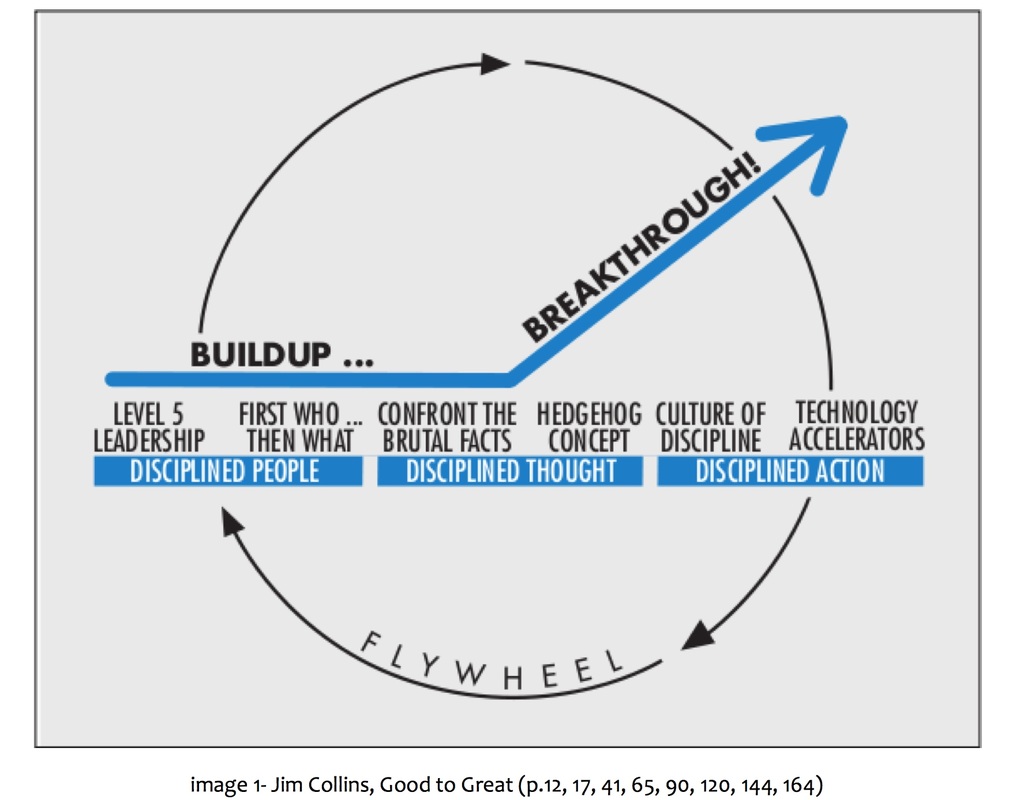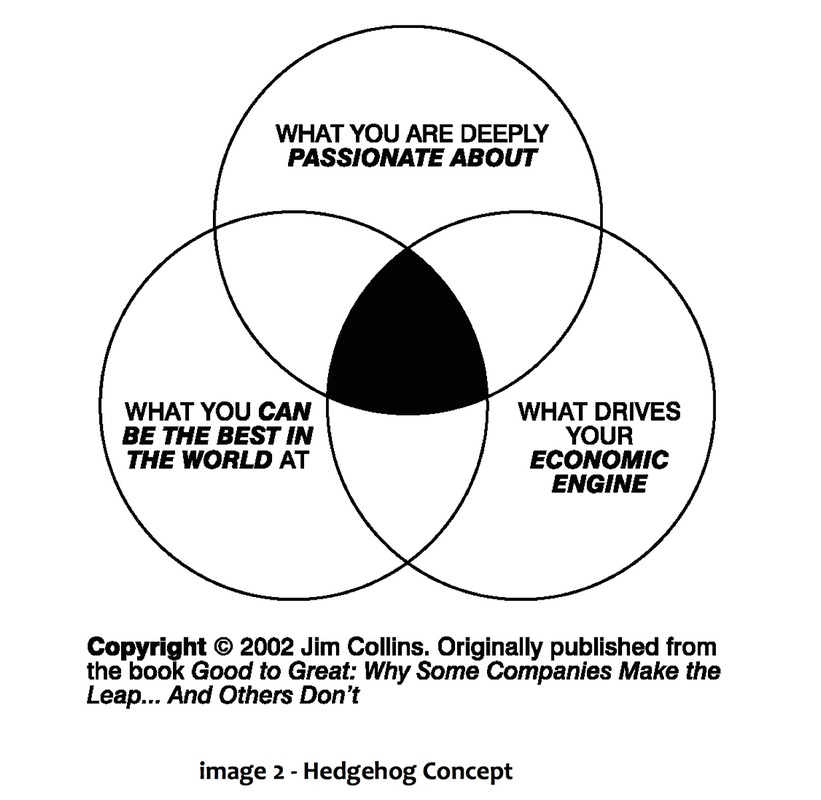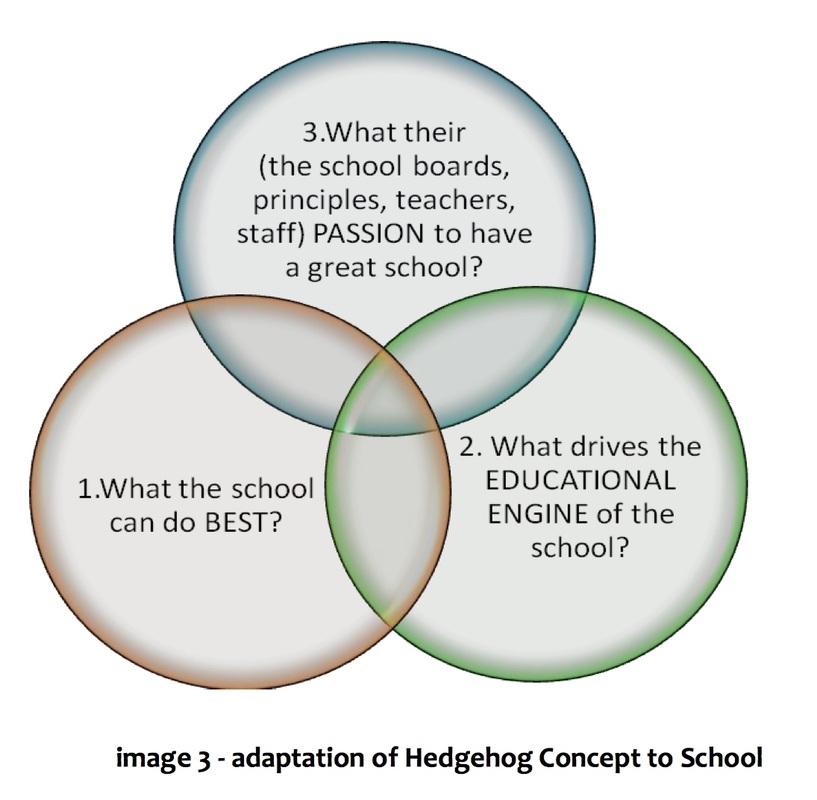|
Öğretim sürecinde yaşanan genel bir eksiklik öğrencilere anlık geri-bildirim (feedback) verilmemesidir. Geleneksel bir sınıf ortamında, öğretmen bir soru sorduğunda bir grup öğrenci parmak kaldırır. Parmak kaldıran öğrenciler ya sorunun cevabını çok iyi biliyorlar, ya da kendilerini ifade etmek konusunda cesareti olan öğrencilerdir. Peki ya diğer öğrenciler? Onların arasında da “hiimmm, cevap bu olabilir, şu da olabilir...” diye düşünen ya da “Simdi biri kalkıp söyler, ben söylemesem de olur...” ya da “ben parmak kaldırsam da, öğretmenim beni görmez...” gibi düşünen öğrencilerimiz olabilir.
Çalıştığım kurumun, “Öğretmeyi Geliştirme Merkezinde”, “geri-bildirim vermeyi, tüm öğrencileri uyanık tutmayı ve etkin katılımı nasıl sağlayabiliriz?” sorusunu tartışırken, sohbetimize ortak olan felsefe profesörü sınav kâğıdı okumanın yoruculuğundan ve çok zaman aldığından bahsedince, ITDP (Instructional Technology Development Program) bölümü olarak, neler yapılabileceğini hocamızla ayrıca bir toplantı yaparak gözden geçirdik. 250 adet i>Clicker için sipariş verdik ve bir kaç gün içinde ilk uygulama başlamış oldu. Bu sürecin bir ihtiyaçtan doğmuş olması motivasyonumuzu iki kat arttırdı. Kalabalık sınıflarda öğretimin kalitesi her zaman sorgulanmıştır: Öğrencilere ulaşmak, onların farkına varmak, sizi dinlediklerini anlamak ve öğrencilere anında geri bildirim vermek, ara değerlendirme yapmak, yapılan kısa sınavların kaydını tutmak, sınıfın genel durumunu anında grafik üzerinde görmek ve tüm bunları çok kalabalık sınıflarda yapmak! Üstelik kabalık sınıflar derken, 90+ sınıf mevcudu olan, amfilerde işlenen derslerden bahsediyorum. Yüksek öğrenimden K-12’ye, yetişkin eğitiminden iş hayatındaki profesyonel kullanımına kadar, “i>Clicker” araçları tam da bu noktada bizlerin arayışına cevap oldu. Katılımı aktifleştiren ve öğretim sürecini eğlenceli bir etkinliğe dönüştüren uygulamada 98 öğrenci ve 3 felsefe profesörüne öğretim teknoloğu olarak benim liderlik ettiğim çalışmanın notlarını öncelikle kullandığımız sistem hakkında bilgi vererek paylaşmak istiyorum. Teknik Bilgiler i>Clicker Teknolojisi ya da “Classroom Response System” ya da anılan başka isimle “The i>Clicker Audience Response System” araçlarını sınıfınızda kullanmak için neler gerekli:
Öğrenciler için i>Clicker...> sınıftaki öğrenci ya da katılımcı sayınıza göre i>Clicker sayısını düzenleyin. Öğrencilere cihazları verin ve cihazların ilgili web sayfasından ya da kullanıcı el kitabında yönlendirildiği adresten, dersinize kayıt olmalarını sağlayın. Bu adreste öğrenciler okul numaraları ve diğer önemli bilgilerle öğretmenin veri sistemine kayıt olacaklar. Öğrencilerin bundan sonra yapması gereken, cihazları sınıfta yanlarında bulundurmak, sınav sırasında soruları cevaplamak için uygun seçenekleri cihaz üzerinden tıklamak... Tabi bir de cihazları kaybetmemeleri gerekiyor. Bizim çözümümüz, öğrencilerin kaybettikleri cihazın yerine yenisi almaları oldu! Gerçekten etkili... Öğretmenlerin kullandığı i>Clicker...> Öğretmen tarafından kullanılacak i<Clicker, alıcıya dersin barkodu ile tanımlanmalıdır. Bu tanımlama işlemini yapmadan önce, kullanılacak bilgisayarın işletim sistemine göre gerekli güncel yazılım USB içinde geliyor. Ancak, önerim internet üzerinden güncel yazılımı takip etmeniz ve USB üzerinden çalıştırmanızdır. Öğretmen i>Clicker’i ile sunumu yönlendirip, duraklatıp, sınav yapabilirsiniz. Bu sayede, kürsüde ya da beyaz perdenin önünde beklemeniz gerekmiyor! Öğrencilerin yakınlarına gidebilir, onlarla daha yakın iletişime geçtiğinizi hissettirebilirsiniz. Her soru için sınıfın başarı grafiğini anında görüntüleyip, doğru cevabı seçebilir ve sınıfla paylaşabilirsiniz. i<Clicker teknolojisini Uygulamaya Başlarken Bunlara Dikkat Edin:
Bu yazıyı okuduğunuz için teşekkür ederim, sorularınızı ve görüşlerinizi paylaşmaktan çekinmeyin :).
0 Comments
How would Collins’s paradigm help improve the school, and where does it need reworking to better fit the nonprofit sector? In this paper I will try to explain that how Collins’s paradigm help improve the school, and where it needs reworking to better fit the nonprofit sector. In his book, Collins creates a framework of a great organization. He does not make a formal definition of “GREAT”, however he draws a framework to reach and have a great organization. The author points out that the flywheel of change “from good to great” has three main components: 1. Disciplined People (level 5 leadership, First Who then What), 2. Disciplined Thought (Confront the Brutal Facts, Hedgehog Concept) and, 3. Disciplined Action (Culture of Discipline, Technology Accelerators). Particularly, he gives meaningful examples from the real life, especially from business, to stress each component. Here, I will try to make a transformation and adaptation for schools. I do not know if all the parts of paradigm fit into School as an organization, but I am convinced that general paradigm fits to schools life. I want to start with the first important principle of the framework: “Get the Right People on the Bus and Get the Wrong People Off” is the first principle in the book to have the great organizations. Some schools, especially private schools’ teachers get fired and new teachers are hired. I interviewed some of the teachers recently, and I asked two physical education (PE) teachers that why they were let go and both answered, “The heads said that they changed perspective of PE lesson.” In some departments, they really have the right people who are perfect in their position with their ability, education, personal properties, relationship, etc. However, in some departments, people who lack education, ability, and communication have the seats. There is a big difference between people’s behavior before the job interview and after the interview. With the wrong people, how can we discuss the challenging points in the school? This question is a kind of paradox. “Confronting the Brutal Facts and the Stockdale Paradox” is the second principle. Great leaders keep and follow their goals. However, while they are doing these;
The author points out that “Yes, leadership is about vision. But leadership is equally about creating a climate where the truth is heard and the brutal facts confronted. There’s a huge difference between the opportunity to ‘have your say’ and the opportunity to be heard” (p.74). “The Stockdale Paradox retains faith that you will prevail in the end, regardless of the difficulties and at the same time confront the most brutal facts of your current reality, whatever they might be.” In terms of school, it is especially true for the head, leaders, and boards in the school. The teachers and staff want to be responsible of the achievement of students if the achievement is high. However, if the achievement is low, who will take responsibility of being unsuccessful? The key point is here. Without solving the fundamental problems in the school, how we can jump up next step? In some school, without solving and discussing challenging points about national curriculum – which is mandatory in accordance with ministry of national education – how we can apply and integrate The International Baccalaureate® (IB) Primary Years Program that offers high quality programs of international education to a worldwide community of schools? “Hedgehog Concept!” Greek poet Archilochus said, “The fox knows many things, but the hedgehog knows one thing“. As mentioned in the book that the leaders of the organizations know what they can do best in the organization, what drives their economic engine, and what organization is deeply passionate about. “Hedgehog Concept is not a goal to be the best, a strategy to be the best, an intention to be the best, a plan to be the best. It is an understanding of what you can be the best at“ (p.98). “The essence of the process is to get the right people engaged in vigorous dialogue and debate, in fused with the brutal facts and guided by questions formed by the three circles” (p.114). Three Circles of the Hedgehog Concept (Collins, 2001) “Precisely, the Hedgehog concept is a simple, crystalline concept that flows from deep understanding about the intersection of the three circles” (p.95).
Adaptation of Hedgehog Concept to School:
The schools are the social sectors. They focus on human education. The author rethinks the important differences between business and social sector. Otherwise, it is difficult and not meaningful to try to apply everything into education sector. As it is mentioned in text of Collins (2005, p.19), “the whole purpose of the social sectors is to meet social objectives, human needs and national priorities that cannot be priced at a profit.” By considering this idea, we rethink about hedgehog concept in the social sector. Collins stated that “in circle one, ‘passion’ is understand what you organization stands (its values) and why it exists (its mission or core purpose). In circle two, ‘best at’ is to understand what your organization can uniquely contribute to the people it touches, better than any other organization on the planet. In circle three, resource engine is to understand what best drives your engine, broken into three parts: time, money, and brand” (p.19, Collins, 2005). By considering these important points, we can apply hedgehog concept into school system as:
Every worker in the school - top to down, down to top - must have a passion in their hearth to achieve the goals. They must deeply believe in themselves and their goals. The author pointed out that “We should only do those things that we can get passionate about” (p.109). We have two great examples of people who get passionate on their work: Adam Smith on economy, and Darwin on the Evolution. If the schools combine three circles of the concept, they will be able to create their schools’ hedgehog concept. Moreover, they are the best people in their specialization subject area. They do not need extra motivation, because they have already motivated with doing their best in the school. This is related to “Culture of Discipline” that we will talk about self-motivated people. “Culture of Discipline” is about the self-motivated employees. “The point is to first get self-disciplined people who engage in very rigorous thinking, who then take disciplined action within the framework of a consistent system designed around the Hedgehog Concept.” (p.126). I think that the culture of discipline is not a new concept in the book, especially for school as an organization. On the other hand, every organizational culture must have;
Consider a football team as a class in the school. They have a goal. To get the goal, they have a policy and schedule to make practice, they all know the rules, they never skip any training or practice, and because of this, they become successful in the football field. The audience watches an exciting football match, however, behind the curtain there is a big plan with high discipline. It is also the same for school governance. In the school, this concept works easily;
However, when we talk about school, educating people, and instruction, it is not smart to mention profit or making money, even in international schools. The schools’ role is educating people not marketing the products. Having well educated population is not easier than having a new machine or cigarette. Making changing on human behaviors is not easy, but changing or choosing your machine is so easy. This is the shortfall of Collins’s concept. “The Flywheel Concept” is a good tool to understand development process of good to great. According to school’s need, while the boards are making the transformation from good to great, they must deeply focus on each process step by step (people, actions, decisions, activities, seminars, etc.). The author points out this process the turning “flywheel”. In a business sector, the main goal is to make money and invest in new sectors. In education, however, the main goal is to educate people and to invest in human development. Even though the turning flywheel has seemed to have similar properties in terms of education sector, we must change something. As I mentioned before, people can change products easily. Changing of human behavior is not easy. It takes times to make change in education. However, there are mutual points for both sides: business and social (education). They are right people in right place, patient and disciplined people-thought-action, working hard and deeply, and face facts and challenge the problems, need time and money and people. As result of this process, by monitoring the turning flywheel, we must examine the every point on the flywheel and we must make change if we need in any points. However, I could not see any component on emotion on the turning flywheel. It seems so capitalist to me! We must add emotional intelligence to make the flywheel transformation into education. “Level 5 Leadership” is compared to high-profile celebrity leaders with elite and superior skills and personalities. Level five leaders are self-effacing, quiet, reserved. The author points out that level five leaders build enduring greatness through a paradoxical blend of personal humility and professional will. By considering Collins’s hierarchy of leadership, it is difficult to place the school to the school head on the hierarchy. The school principals or heads must have leadership skills. They have to build relationships and work collaboration among teachers, students, parents, boards, support staff, members of ministry of natural education, and other community. Some school principle tries to do this, but most of them are not a level five leadership. They are so polite to everybody, silent. They She try to create time to speak everybody who knock their door, speak slowly. Some parents and teachers think that it is a sign of their weakness. I do not agree with them. However, other people in the school easily influence them. I think that this is one of their weaknesses. So, They could not build a good school development team with the right people. For a school leader, it is difficult to apply concept “getting the right people on the bus, the wrong people off the bus, and the right people in the seats”. The school principle as a leader wants to gain every people into society. Being great, good, or bad is not important; they are people who are living in same country. So, principal is important in the school: not because of being on the top, but because they have an impact on people. If they use their power honestly, they should motivate the people, build strong relationship and common goals among all. Being produced and sustained student achievement must be profits for a school principle. Conclusion To end to say; my point is not fit with Collins’ concept. I support to combine with Bolman & Deal (2003, p.314) “Reframing Organization” and “Collins’s framework”. Starting with structural frame, having a school policy, vision, and applicable mission are the first. Confronting the brutal fact, hedgehog concept (what is school best, educational engine), technology accelerator, and flywheel is not an infinite loop. It requires improvements in each turn. Additionally, in the human resources frame, it merges with level five leaders and first who then what. In the symbolic frame, peers never lose faith, leaders apply hedgehog concept (deeply passionate) and form a culture of discipline. Manager does not want to make a big change in people. Many of them work with each other for many years. They have an emotional link between people in the school. If a teacher works for five years in a school happily, after making big change in the school, the heads cannot say to the teacher “we do not want you, because you are not people right now.” There are many shortfalls in Collins‟ concept as I explained above. Thus, we need to combine and reframe the leadership and school development with Bolman and Deal. References: Bolman, L. & Deal, T. (2003). Reframing Organizations. Third Edition. Collins, J. (2001). Good to Great. Boulder Collins, J. (2005). Good to Great, and the Social Sectors. Boulder, pp. 17-23. Acknowledgement: Special thanks to Pearl Rock Kane who is the Klingenstein Family Chair Professor of education in the Department of Organization and Leadership, director of the Klingenstein Center for Independent School leadership and advisor for the Master’s degree programs focusing on school leadership at Teachers College, Columbia University. |
FollowAuthor
Archives
October 2020
Categories
All
|

